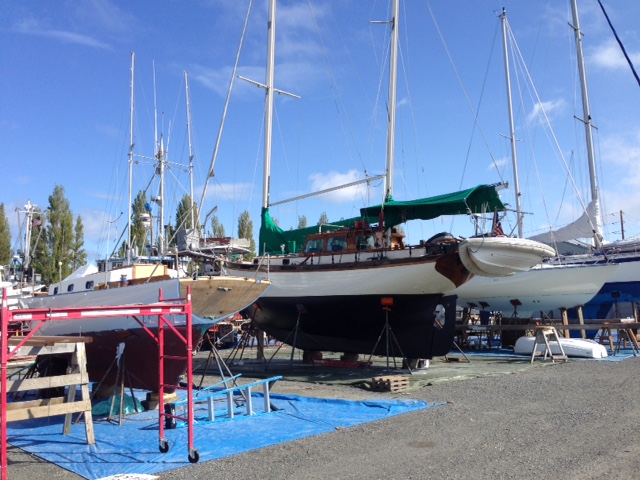As we have communicated previously, the Port of Port Townsend is currently in the midst of a Level 3 environmental response to the WA State Department of Ecology. This is the highest level of response, and reflects the serious nature of the level of contaminants entering our stormwater system. Our continued ability to run a boatyard in Port Townsend is dependent on our ability to reduce contaminant levels.
There are two primary issues we are addressing:
- Cleaning up contamination that has built up over the years
- Preventing present and future contamination
Cleaning up contamination that has built up over the years
Over the many years of operations at the Port’s Boat Haven facility, contamination has built up to levels that now exceed state standards. The Port has an underground water retention system that stores up to 50,000 gallons of water, in various vaults, in much the same way as a septic tank. When stormwater runs into that tank, solids settle to the bottom. After nearly 20 years of accumulation, that sludge needs to be cleaned. That sounds easy, but it is far from it. Finding a home for the water (which is not free of contaminants) is a complex issue, as is the actual removal of the sludge.
Above ground, tests indicate that over the years, the top 4 inches of gravel in the boatyard are contaminated and need to be removed and replaced. In the context of our entire 17 acre facility, this is a very expensive process. This year, as part of our Level 3 response, we removed the top 4 inches of gravel out of an area of the shipyard and shipped it to a hazmat facility in Eastern Washington, and replaced that with clean gravel. That one small section alone cost $50,000 to fix. Until we do that across the facility, every time we get a large rain event, a significant amount of contaminants runs off of the gravel into our stormwater system.
A common question we get is “why not just pave the yard?” It sounds like a simple solution – and if we were building the boatyard from scratch we would likely do that. However, there are a number of factors that make it a challenging solution:
- Our heavy haulout lift would require almost a foot of asphalt to support it. We can’t build “up” the yard, so we would have to remove a foot of contaminated gravel first – which would be very costly. So we can’t just “pave it over.”
- Stormwater run-off from asphalt is significantly greater than runoff from gravel. We do not currently have the stormwater management facilities to handle the amount of run-off that would result from a paved yard.
- If we were to completely redesign our stormwater system to support a paved yard, and then went ahead and paved everything, we’d be looking at a cost of at least $5 million. We can’t currently afford that level of investment. This would also require a multi-year capital project that would displace a lot of business and revenue.
So you can see, there are not a lot of easy answers to address our existing, accumulated contaminants. We work with what we have, doing the best we can, one piece at a time as the budget permits.
Preventing present and future contamination
One of the most effective things that we all can do to help ensure the continued viability of the boatyard, however, is to do our very best to control pollution right now, and moving forward.
As part of our Level 3 response, we’ve made a variety of cutting edge improvements to our existing stormwater system, including the use of bio-char. These are significant investments that our tests indicate are having a positive impact.
However, the Port can only do so much to mitigate pollution. The best way to prevent contamination is to stop it at the source. That is where tenants and boat owners come in. Taking care when performing your boat maintenance and repair work to ensure that no pollutants such as airborne paint dust or paint chips leave your work site or make contact with stormwater is critical to controlling pollution at the source.
Moving forward
We are on a long journey together as a Port and as a community. We all want to see the boat yard continue to grow and prosper. Our continued collective vigilance in environmental response will ensure that growth and prosperity are possible.

